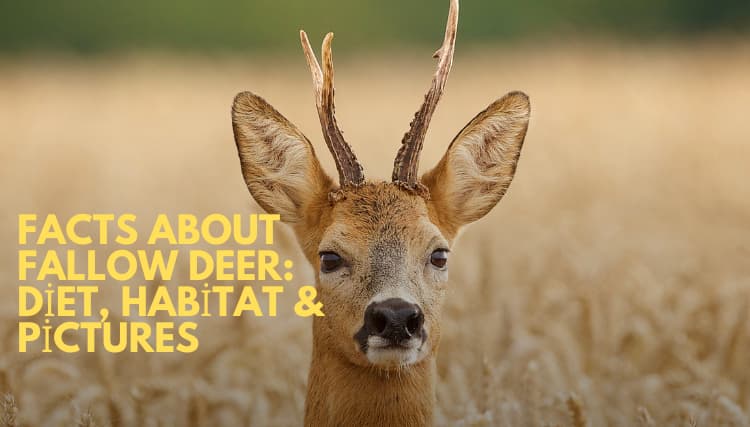
Fallow deer are a species of deer native to Europe and Asia, with the Persian fallow being the most common. These majestic animals are known for their distinctive winter coat, which varies in color from white to dark brown.
During the rutting season, males will establish a rutting stand and compete for females within their small herd. Fawns are born in late spring or early summer and stay with their mother until they are old enough to join the herd. Fallow deer are adaptable and can be found in a variety of habitats, including open fields and wooded areas.
The History of Fallow Deer

Fallow deer have been introduced to many parts of the world as game animals, including North America, Australia, New Zealand, and South Africa. In some areas, such as Australia, they have become an invasive species due to their ability to adapt to new environments and reproduce quickly.
Fallow deer were first introduced to Britain by the Romans over 2,000 years ago as a source of food and sport. Today there are several populations of wild fallow deer living throughout Britain.
Why Are Fallow Deer Invasive?
Fallow deer can quickly become an invasive species because they have no natural predators in many parts of the world where they have been introduced. This allows them to reproduce rapidly and outcompete native species for resources such as food and shelter.
When Was Fallow Deer Introduced To Britain?
Fallow deer were first introduced to Britain by the Romans over 2,000 years ago as a source of food and sport. Since then, several other introductions have occurred from different regions across Europe.
Why Was The European Fallow Deer Introduced To Australia?
The European fallow deer was first introduced into Australia in the mid-1800s for hunting purposes. They were brought over from England on ships along with other game animals such as red deer and sika.
Feeding Habits of Fallow Deer
Fallow deer are herbivores and feed on a variety of vegetation including grasses, leaves, buds, and bark. They are known to be selective feeders and will choose the most nutritious parts of plants to eat.
Physical Characteristics of Fallow Deer
Fallow deer are one of the most recognizable deer species due to their unique physical characteristics. They have a lean body with long legs, allowing them to run at high speeds. Fallow deer are known for their distinctive appearance, with a white-spotted coat and large body size. Their footprints are also easily identifiable in soft soil or snow, as they have heart-shaped prints.
The average size of an adult fallow deer is around 3-4 feet tall at the shoulder and can weigh up to 200 pounds. Male fallow deer typically have antlers that measure around 23-27 inches in length, while female fallow deer do not have antlers. Measuring antlers is an important aspect of tracking the growth and health of male fallow deer populations.
Aside from their physical attributes, fallow deer are also known for their adaptability to different environments. They can thrive in various habitats such as forests, grasslands, and even urban areas. This adaptability has led to successful introductions of fallow deer populations in many countries worldwide.
Habitat and Diet of Fallow Deer
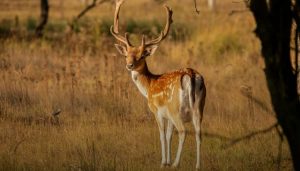
Fallow deer are known to be adaptable creatures, thriving in various habitats such as woodlands, grasslands, and farmlands. Their diet consists of a variety of vegetation that includes leaves, shoots, fruits, and nuts. These selective feeders change their diets depending on the season and availability of food.
The habitat of fallow deer is diverse. They can be found in different parts of the world like Europe, Asia Minor, North Africa, and New Zealand. In Europe alone, they inhabit 35 countries and have been introduced to other continents for hunting purposes. Fallow deer prefer open spaces with some trees or bushes for cover. During the winter months when food is scarce or covered by snowfall, they move to lower elevations where there is more vegetation available.
Fallow deer’s diet varies throughout the year as it changes according to seasonal availability. During spring and summer months when there is plenty of vegetation growth, they feed on fresh grasses and herbs. In autumn when fruits begin to ripen on trees like apples and pears or nuts such as acorns become abundant on oak trees; fallow deer will eat them too! As winter approaches with its harsh weather conditions limiting food sources significantly – fallow deer will switch their diet from fresh greens towards woody plants’ bark.
Fallow deer’s selective feeding habits allow them to survive in areas where other herbivores may not thrive due to competition for resources. They can also adapt their diets based on what types of plants are available in different regions around the world.
Mating System and Reproduction of Fallow Deer
Fallow deer have a unique and intriguing mating system that involves competition, aggression, and group dynamics. During the breeding season, also known as the rutting period, male fallow deer compete for access to females in a polygynous mating system. This means that dominant males mate with multiple females while other males are left without a mate.
The rutting period occurs from October to November in temperate regions. During this time, dominant males exhibit aggressive behavior towards other males and attract females through vocalizations and displays. These displays can include roaring, parallel walks, and neck wrestling.
Females form groups during the breeding season which can range from small groups of 2-3 individuals to larger groups of up to 30 individuals. Group size and composition can affect mating success and may also impact the ecology of the surrounding habitat. For example, large groups of female fallow deer may cause damage to crops or vegetation.
Interestingly, research has shown that male fallow deer are more successful in attracting mates when they are surrounded by larger groups of females. This suggests that female group dynamics play an important role in determining mating success.
In addition to competition for mates, male fallow deer also face challenges such as predation and habitat loss which can impact their reproductive success. Understanding the intricacies of fallow deer’s mating system is crucial for conservation efforts aimed at protecting these fascinating animals.
Life Cycle of Fallow Deer
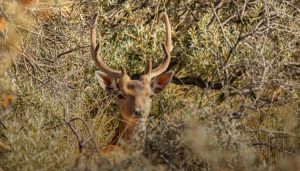
Fallow deer have a life expectancy of up to 16 years in the wild. These beautiful creatures are known for their distinctive palmate antlers and spotted fur. They are herbivores, feeding on grasses, leaves, and shoots.
Fawns are born in late May or early June after a gestation period of 230 days. Fawns are born with white spots that disappear after three to four months. During this time, they stay close to their mothers and nurse frequently.
Male fallow deer reach sexual maturity at around 18 months, while females reach it at around 16 months. Once they reach maturity, males will compete for mates during the breeding season in October and November. This is when male deer shed their antlers and grow new ones in preparation for the next breeding season.
Fallow Deer Facts: Fun Facts for Kids
Fallow deer are fascinating animals that have captured the attention of many due to their unique characteristics. Here are some fun facts about these majestic creatures that you might not know.
-
Adult fallow deer can weigh up to 200 pounds.
Fallow deer are among the largest species of deer, and adult males (bucks) can weigh up to 200 pounds. Females (does) are typically smaller and lighter, weighing between 70-110 pounds.
-
Fallow deer have been introduced to many parts of the world, including North America and Australia.
Originally from Europe and Asia, fallow deer have been introduced to many other parts of the world as game animals or for ornamental purposes. They have become established in places like North America, Australia, New Zealand, and South Africa.
-
The number of antlers on a fallow deer can indicate its age and health.
Male fallow deer grow antlers each year that they use for fighting during mating season. The number of points on their antlers can indicate their age and overall health. Bucks with more points are typically older and stronger than those with fewer points.
-
These deer are social animals and often live in herds.
Fallow deer are social creatures that often live in herds consisting of females and their young. Males typically live alone or in small groups outside of mating season but will join the herd during the breeding season.
-
Fallow deer are known for their beautiful spotted coats.
One of the most distinctive features of fallow deer is their spotted coat. The spots range from white to black depending on the subspecies, but all have a reddish-brown base color. This coloring helps them blend into their forested habitats.
Native Populations of Fallow Deer

Fallow deer are one of the most unique and fascinating species in the family Cervidae. They are native to Europe and Asia but have been introduced to many other parts of the world, including North America, South America, Australia, and New Zealand. In this section, we will explore some interesting facts about fallow deer populations.
British deer populations include fallow deer, sika deer, and several other deer species. Fallow deer have palmate antlers that are shed annually and can be used to determine the age of a deer. The antlers grow back each year with more branches as the animal ages. This makes it easy for hunters to identify mature males from young ones.
Fallow deer are typically found in mixed woodland and forests where they form herds and feed on vegetation. These herds can range from a few individuals to several hundred animals depending on the habitat’s carrying capacity. Historical herd sizes were much larger before human settlement reduced their numbers drastically.
The natural history of fallow deer is fascinating because they exhibit both migratory and sedentary behavior patterns depending on their location. For example, some populations migrate seasonally between high-altitude summer ranges and low-altitude winter ranges while others remain sedentary throughout the year.
Global Distribution and Conservation Status of Fallow Deer
Fallow deer are a globally distributed species, with populations found in various areas of the world. Their conservation status is considered “least concern” on the IUCN Red List due to their widespread range.
One area where fallow deer are particularly abundant is the UK, where they are considered a common species. However, despite their wide distribution and relatively stable population numbers, there are still some concerns about their conservation status.
Conservation efforts for fallow deer have been focused on protecting their habitats and managing populations through hunting and other means. In some areas, such as New Zealand, fallow deer have become an invasive species that can cause damage to local ecosystems.
Despite these challenges, fallow deer remain an important part of many ecosystems around the world. They provide food and other resources for humans and other animals alike, and their presence helps to maintain healthy ecosystems.
How High Can Fallow Deer Jump?
Fallow deer are known for their impressive jumping abilities. Research shows that they can jump up to 7 feet high, which is higher than the average height of an adult human. This ability allows them to escape predators and navigate through their natural habitats with ease. Additionally, fallow deer are agile and quick on their feet, making them excellent runners as well. Their powerful legs and muscular bodies make them well-suited for jumping and running, making them a fascinating species to observe in the wild.
Are Fallow Deer Dangerous?
Fallow deer are generally not considered dangerous to humans. They are known to be timid and will usually flee when they sense danger or feel threatened. However, it is important to remember that they are still wild animals and should be treated with caution and respect. If approached too closely or cornered, a fallow deer may become aggressive and use its antlers to defend itself. It is also important to avoid feeding or approaching them as this can lead to habituation and potentially dangerous situations in the future.
All About Fallow Deer
Fallow deer are fascinating creatures that have captured the attention of many wildlife enthusiasts. Their physical characteristics, habitat, and mating system make them unique among other species. With a global distribution and conservation status in mind, it’s important to understand their life cycle and native populations.
Whether you’re a kid looking for fun facts or an adult interested in their E-E-A-T value, fallow deer are worth learning about. From their majestic antlers to their social behavior, these animals continue to intrigue us with their beauty and complexity. So next time you spot a fallow deer in the wild or at a zoo, take a moment to appreciate all that they represent in the animal kingdom.
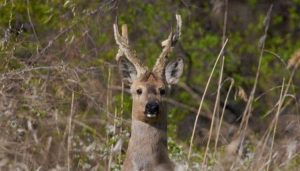
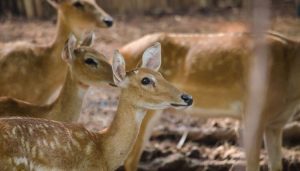
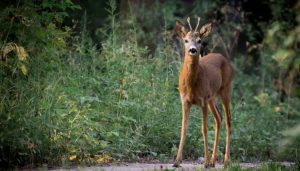

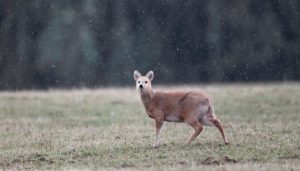
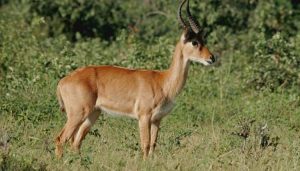
Leave a Reply